Yes, you heard me: I’ve smeared, and I will smear again.
A lot of comments I see online about tin-lined copper speak of smearing in hushed and horrified tones as though it’s a terminal affliction. I’d like to demystify smearing a bit and offer some reassurance.
To understand how tin comes off a pan, let’s start by understanding how it gets on there in the first place. A smith puts pure tin into the pan and heats it up well past tin’s melting point of 450°F (232°C). Once the tin is liquid, the smith spreads the tin around the inside of the pot. As the pot cools, the smith wipes the tin until it solidifies into a nice smooth surface with just a few swirl marks to show the smith’s work.
The thing is, just as human hands put the tin there, so can human hands take it off. 450°F isn’t all that terribly hot. The average home cooktop can heat a copper pot up 450°F and beyond, and if your pan gets so hot that the tin melts a bit while you’re pushing food around the pan with your spoon or spatula, you can leave marks in the tin just like the coppersmith did.
That’s called smearing, and as the title of this post suggests, I’ve done it a few times. I didn’t intend to do it and I’m not proud of it, of course, but I’m not particularly upset, either; I’ve learned that my smeared pans are perfectly serviceable and, in one case, possibly a better pan for it.
My worst offense
I’m starting with the most egregious example I have to get the shock of it over with. This is a big beautiful sauté pan, 30cm (11.8 inches) diameter, absolutely lovely to use.
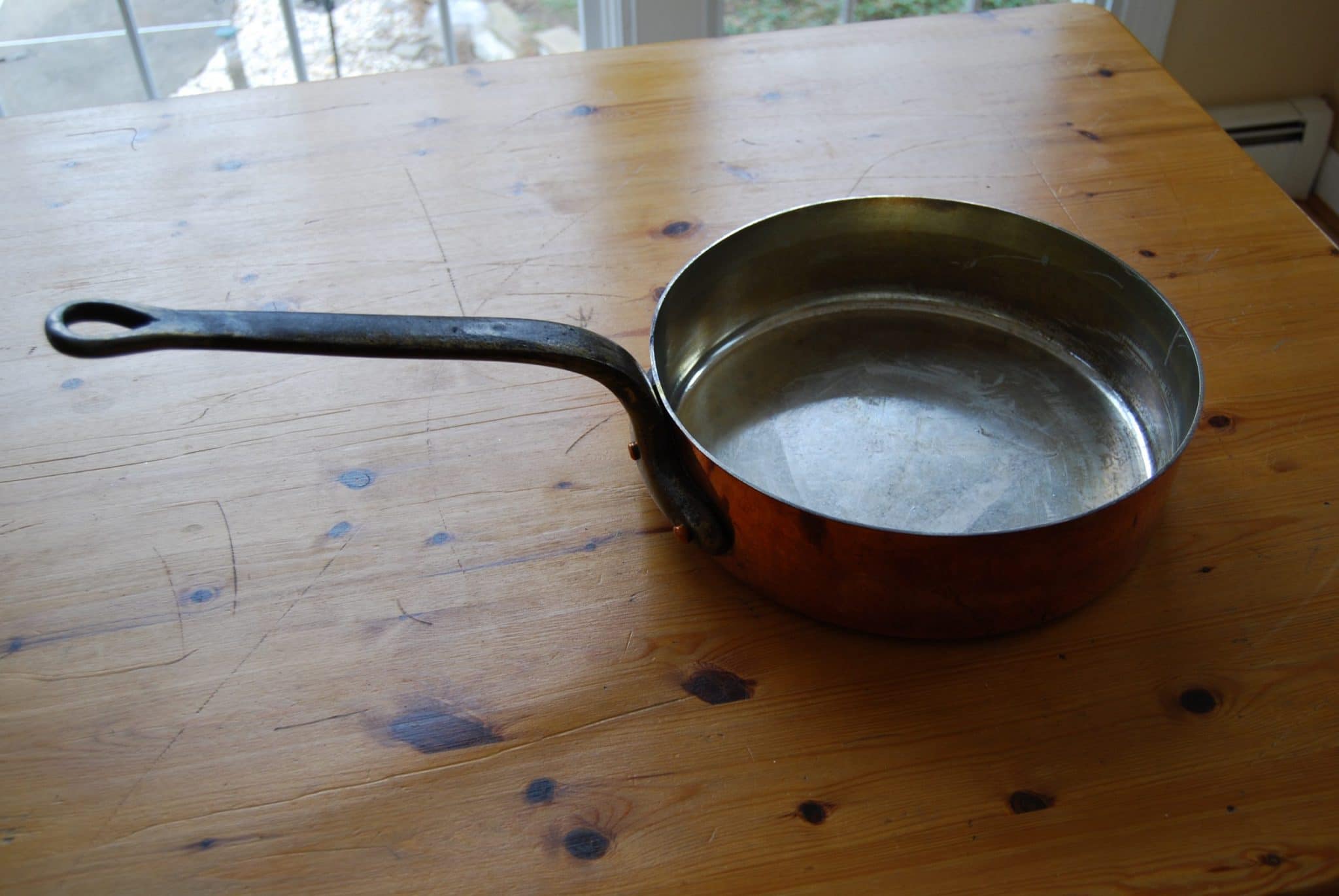
I’ve used it a few times now, as the discoloration bands around the walls testify, and it looks like the last time I used it, I got it a little too hot.
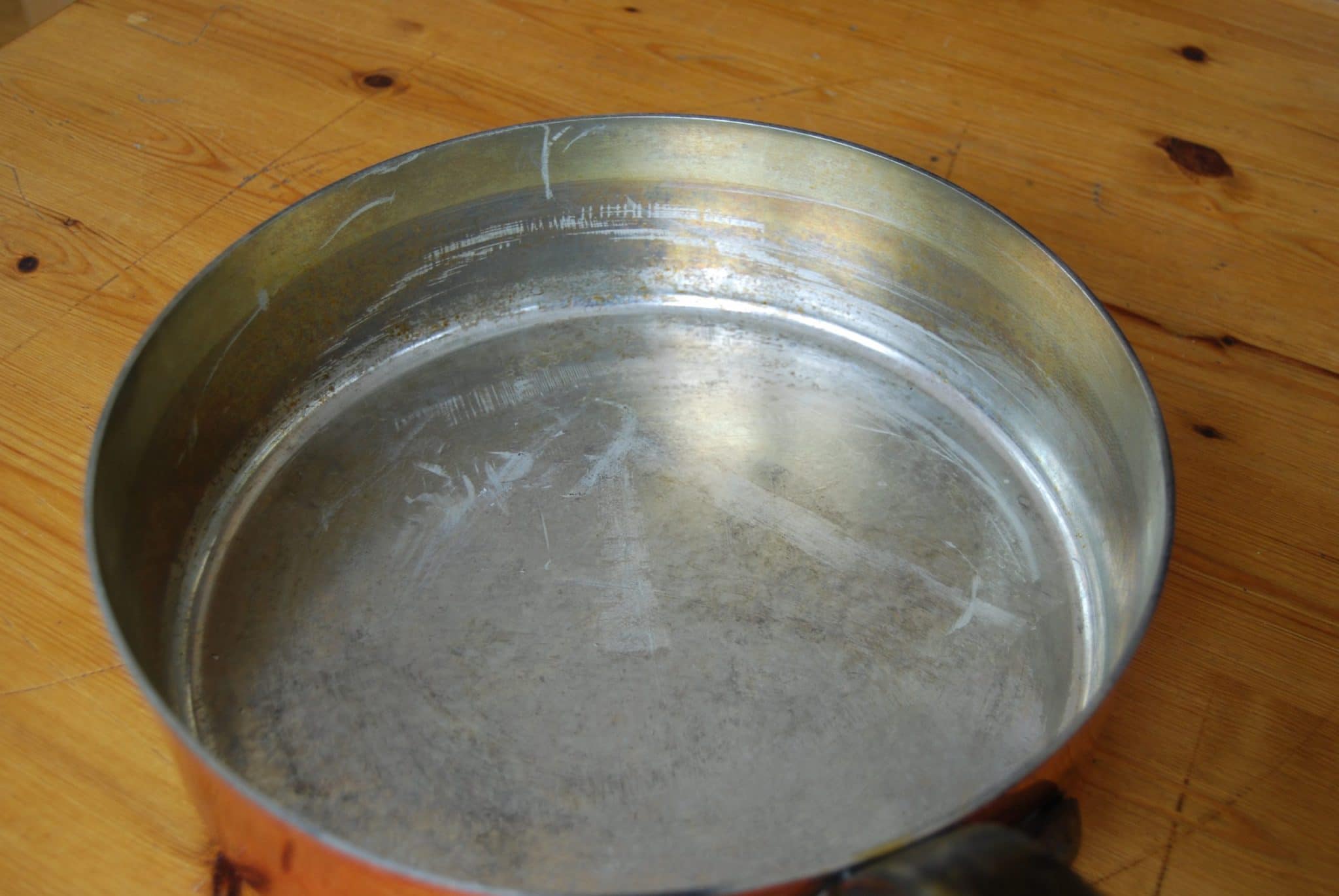
Yep, that’s smearing. Have a closer look.
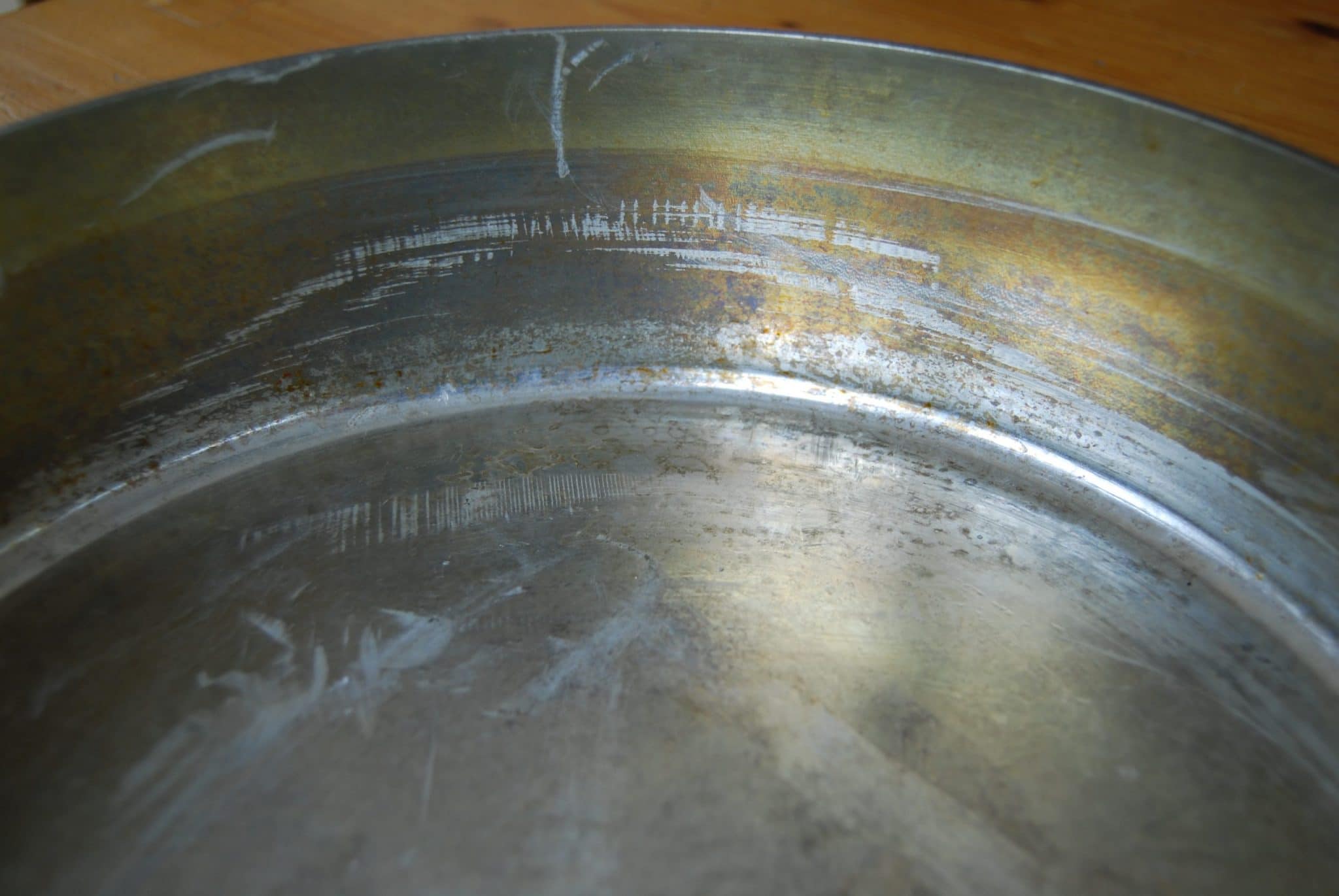
Those are the marks left by the edge of a silicone spatula scraping against the floor and sides of the pan. I think what I was doing was trying to get food out of the pan by tipping it up and scraping everything into one spot and then over the lip of the pan onto a plate.
But you know what I don’t see? Any exposed copper. (The brown tint on the tin is just cooking discoloration, not copper showing through.) Even fairly, uh, vigorous action with a spatula wasn’t enough to scrape the tin away completely.
Another smearing example
Here’s a second pan I’ve smeared, a nice smaller sauté with a helper handle.
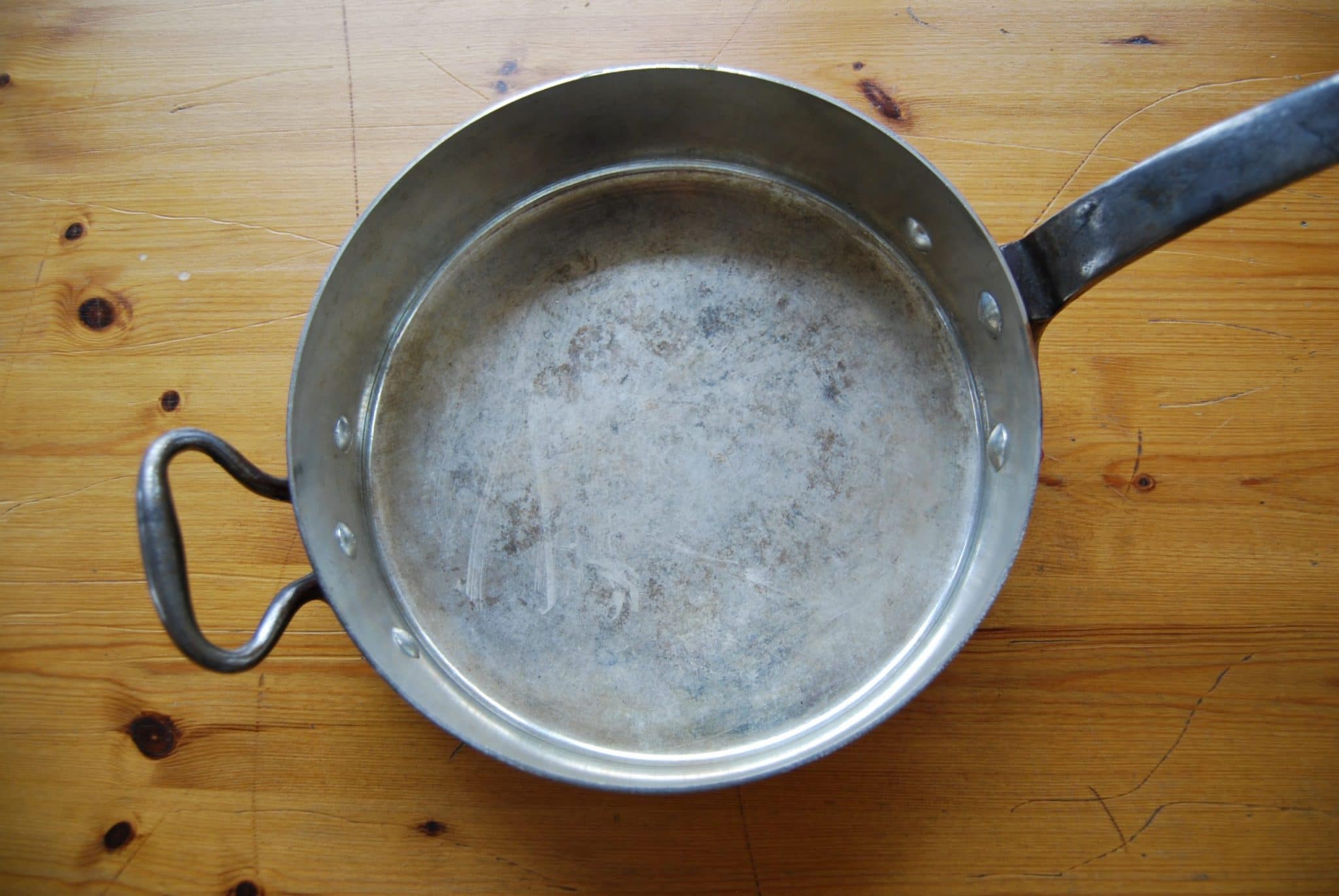
I remember how I smeared this one: two fat chicken breasts. They were taking forever to cook and I tried to rush them by dialing up the heat. It didn’t work: the pan got super hot but the chicken didn’t cook any faster. I know now that high heat doesn’t propagate any more quickly through thick proteins than normal heat, but I didn’t learn it in time to prevent smearing this pan.
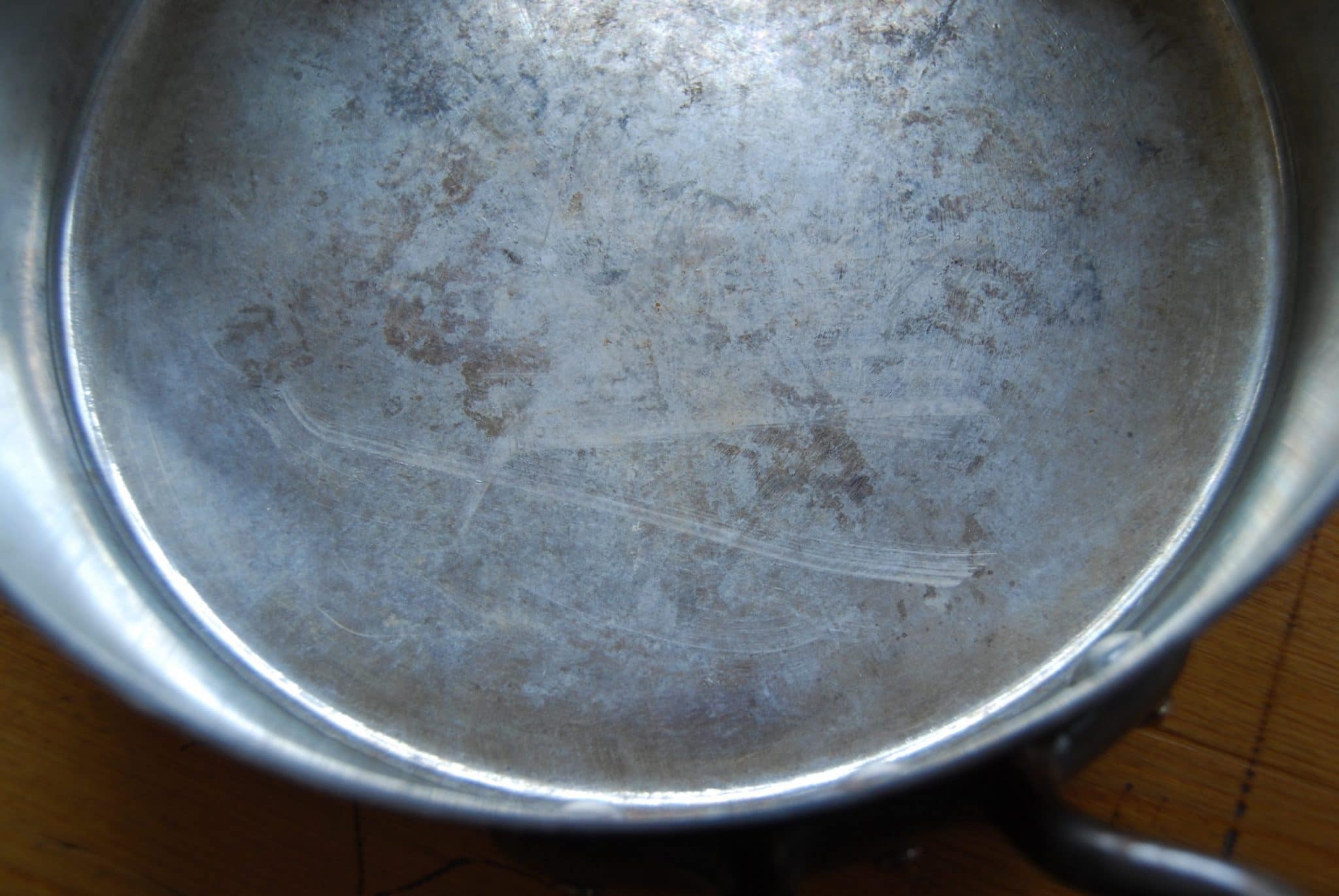
Still, I don’t think this smearing is a big deal. It’s just a reminder not to rush things.
Bubbling
Another byproduct of melting tin is bubbling. This is a bit of a misnomer, as the tin isn’t bubbling like boiling water; rather, surface tension pulls loose melted tin into droplets that solidify into little lumps as they cool.
This little 20cm sauté pan below shows both a small smear mark and bubbling around the perimeter of the base.
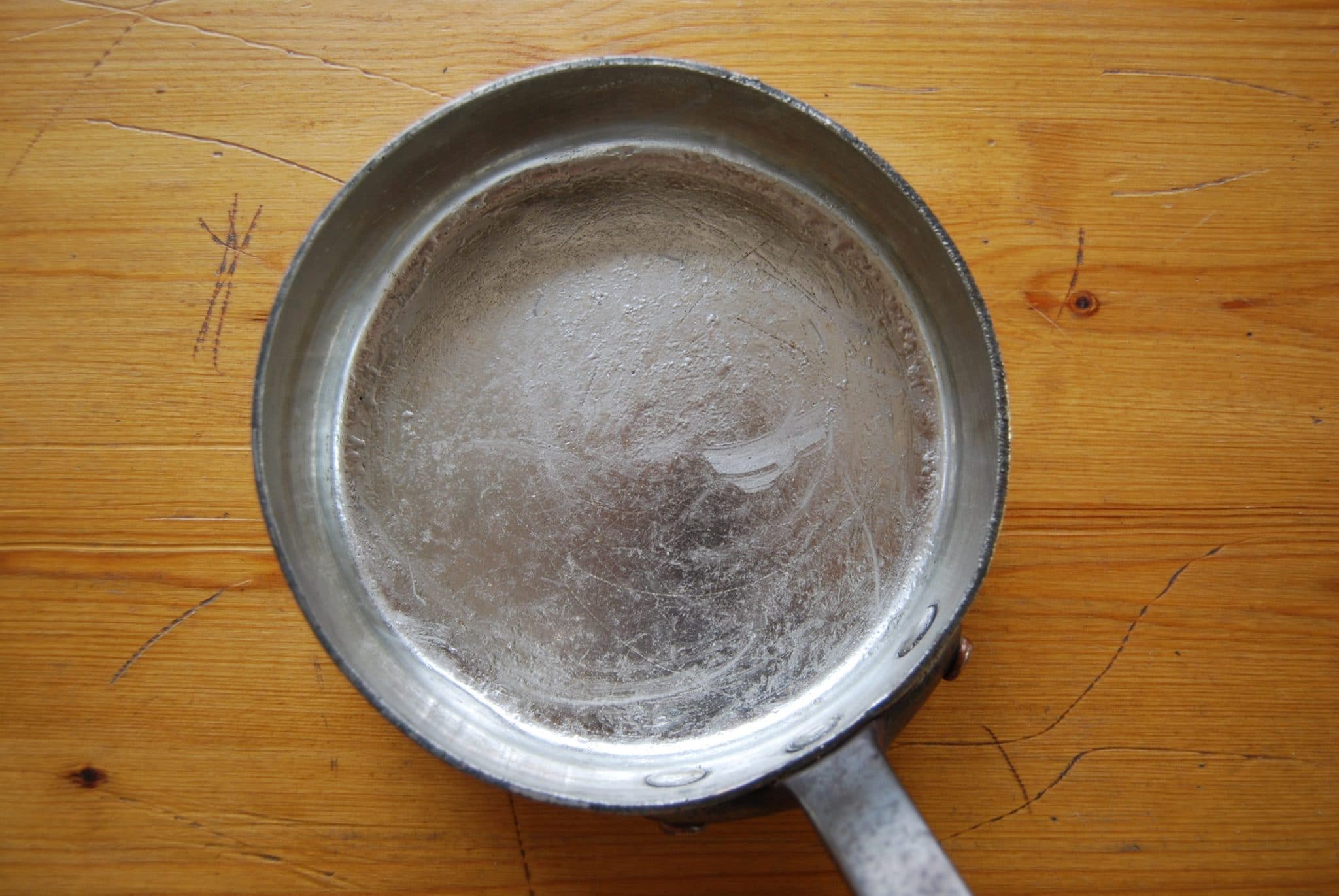
Here’s another view. You can see the lone smear mark as well as bubbling. The big loopy circles are old scratches in the copper, under the tin. (I don’t know what made those scratches but I suspect it was a metal implement of some kind.)
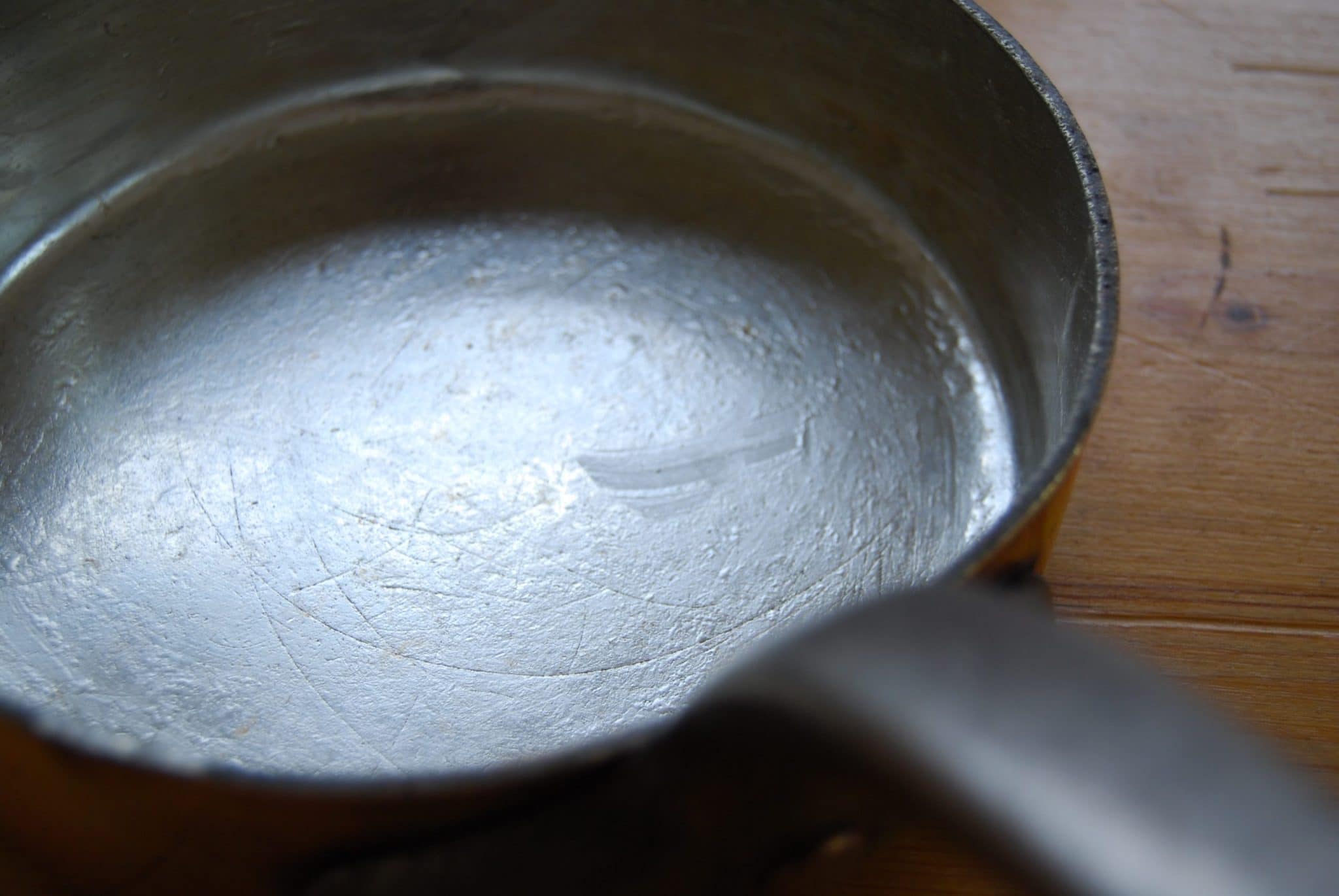
Bubbling seems to be fairly common on tin-lined copper. It’s not always easy to see, and when people do notice it, they may think it’s a defect in the pan or the tinning job. A copper collector of my acquaintance tells me that she could once buy gorgeous copper pans for pennies on the dollar from Williams-Sonoma because neophyte copper buyers overheated them, bubbled the tin, and returned the pan.
The first pot I showed you above — the egregious smearing example — also (not surprisingly) has some bubbling. It’s hard to see from above, but you can see it from this angle. Look in the lower right area of the base of the pan.
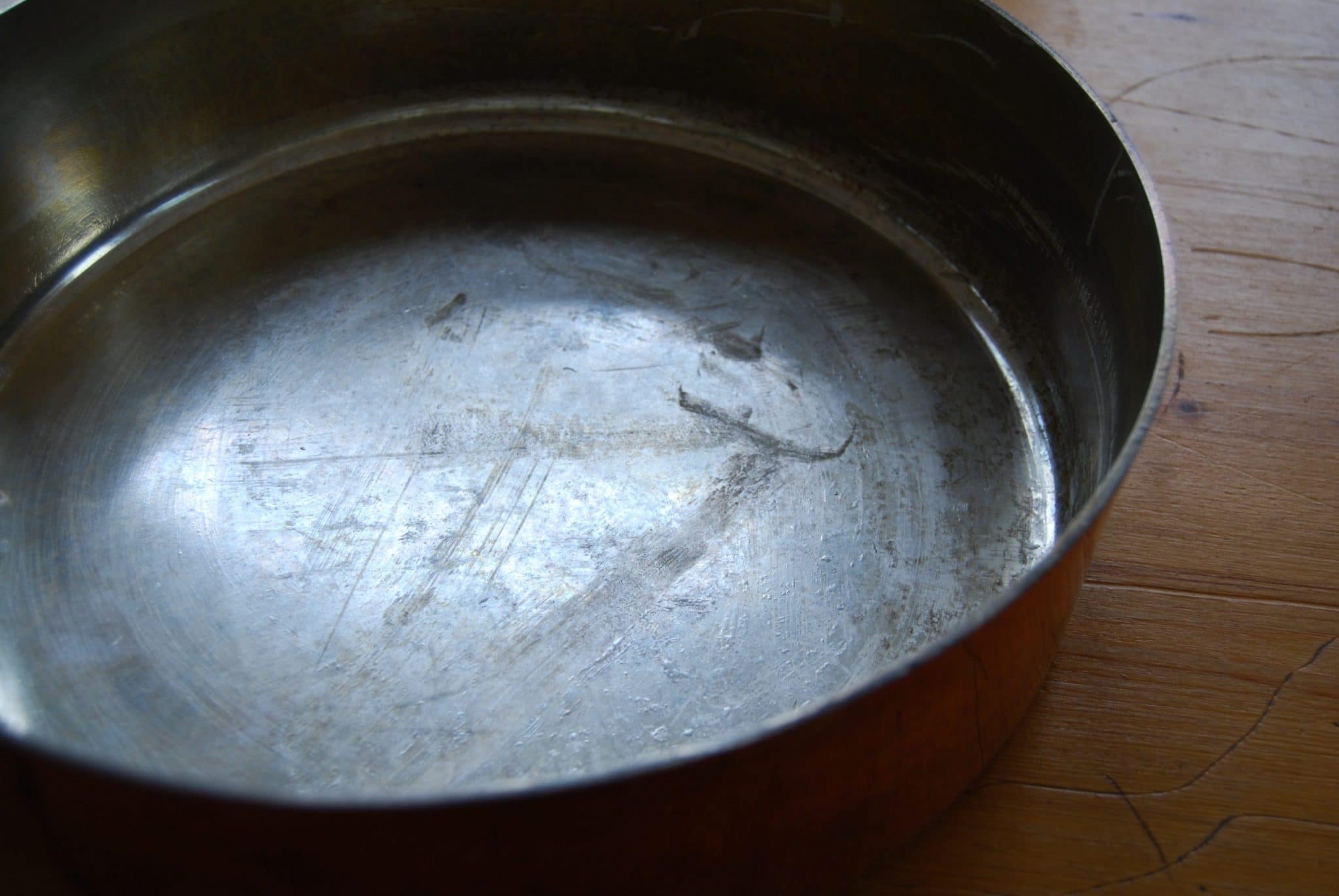
I don’t get worked up about bubbling. It’s a sign that the pot’s gotten pretty hot, and that perhaps the chef needs to back off the heat a little bit or use some oil or butter. (I have anti-smearing hints below.) But in my experience, bubbled tin doesn’t affect the performance of the pan in any way: food doesn’t stick to it, it doesn’t affect scraping fond, and it cleans up just fine.
Smearing averted
I once left a tinned saucepan empty on medium heat for about forty-five minutes. I’d been cooking something and set the pot down without turning off the heat and forgot about it. I smelled the pot burning and rushed in to find it quite hot — not red-hot, but certainly quite a bit hotter than it’s supposed to get.
I snatched it off the burner and had the presence of mind not to do anything but set it aside to cool. Here’s a photo of the interior. The dark marks on the floor are original tinning swipes; focus on all the burned-on brown gunk.
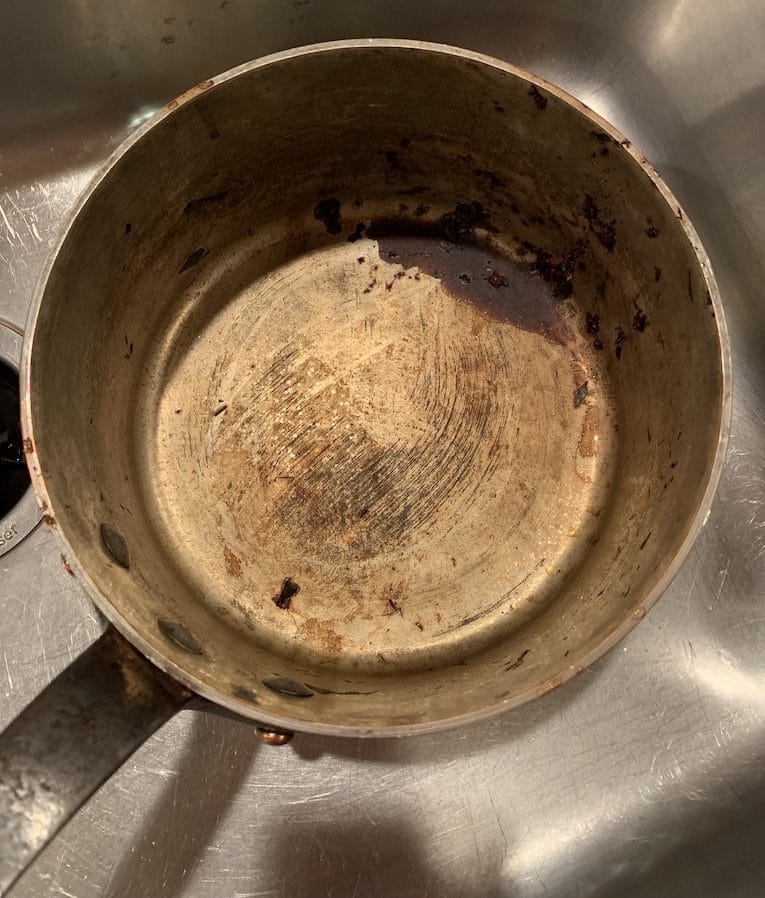
I also took a photo of the outside. Copper changes color with heat, and the more dramatic the color change, the higher the heat probably was. This pot had changed from a uniform rosy copper to an otherworldly combination of blue and green and yellow brassiness. It took quite some time to cool down as the copper is 3mm thick and holds heat quite well.
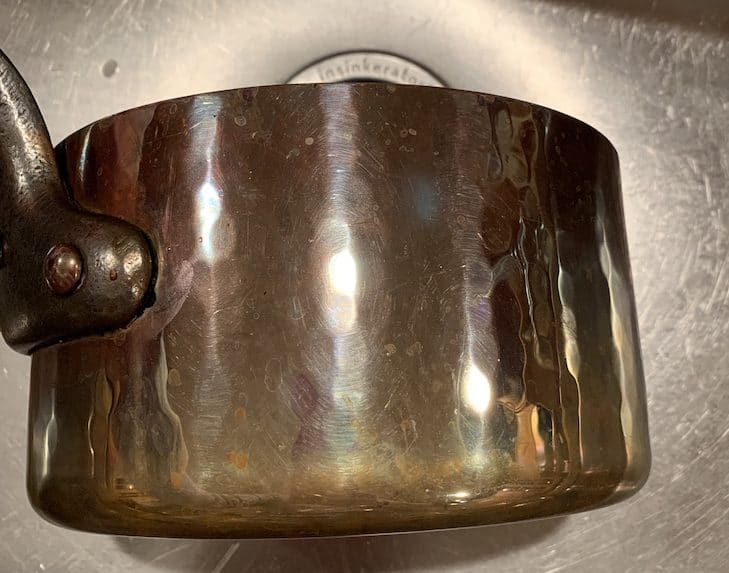
When the pot was cool I filled it with water and let it soak overnight. With some soap and gentle scrubbing with a non-scratch sponge, everything came off, even the carbonized bits. Here’s the pan now.
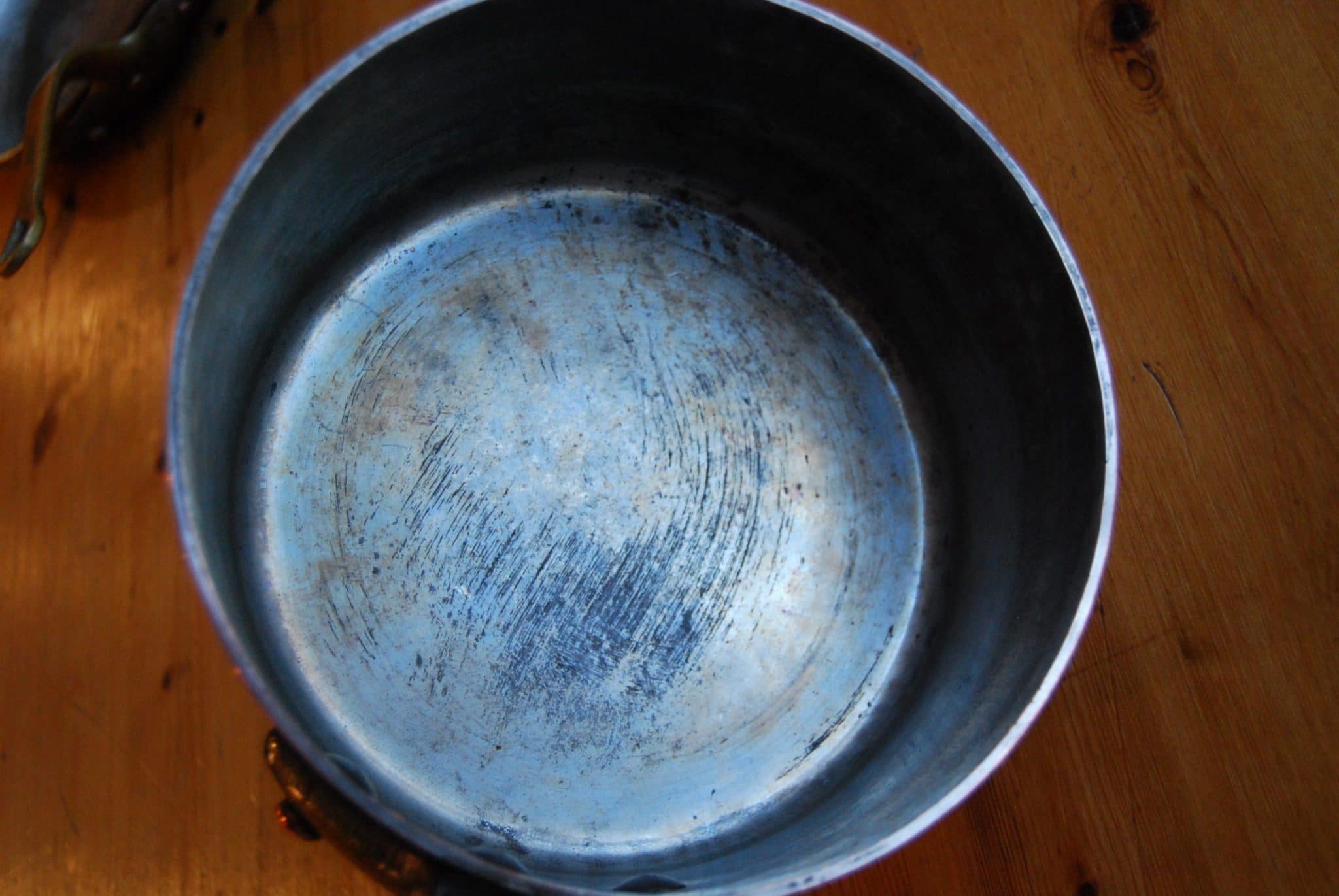
The tin is fine. It got hot and almost certainly melted, but it didn’t budge because there was no mechanical action to dislodge it. If you overheat a pan, even drastically, just take it off the heat and let it cool down.
A smeared pan is still a great pan
I have a whole post on this skillet because I love it so, but even I have to admit, it’s kinda ugly looking. And boy howdy has it been smeared.
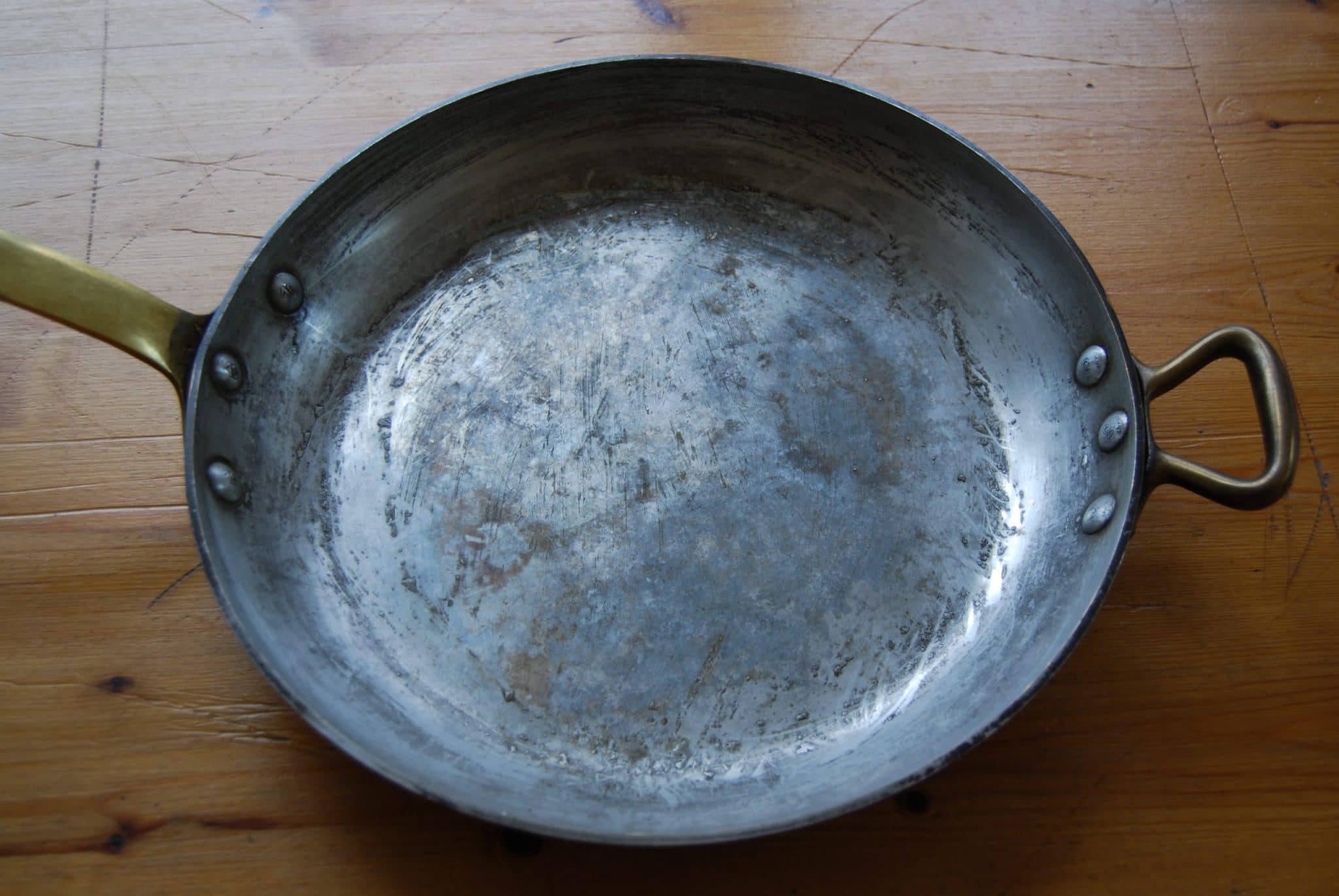
Skillets are particularly vulnerable to smearing because they tend to get used for searing and other higher-heat cooking tasks. This one has been overheated, smeared, and bubbled.
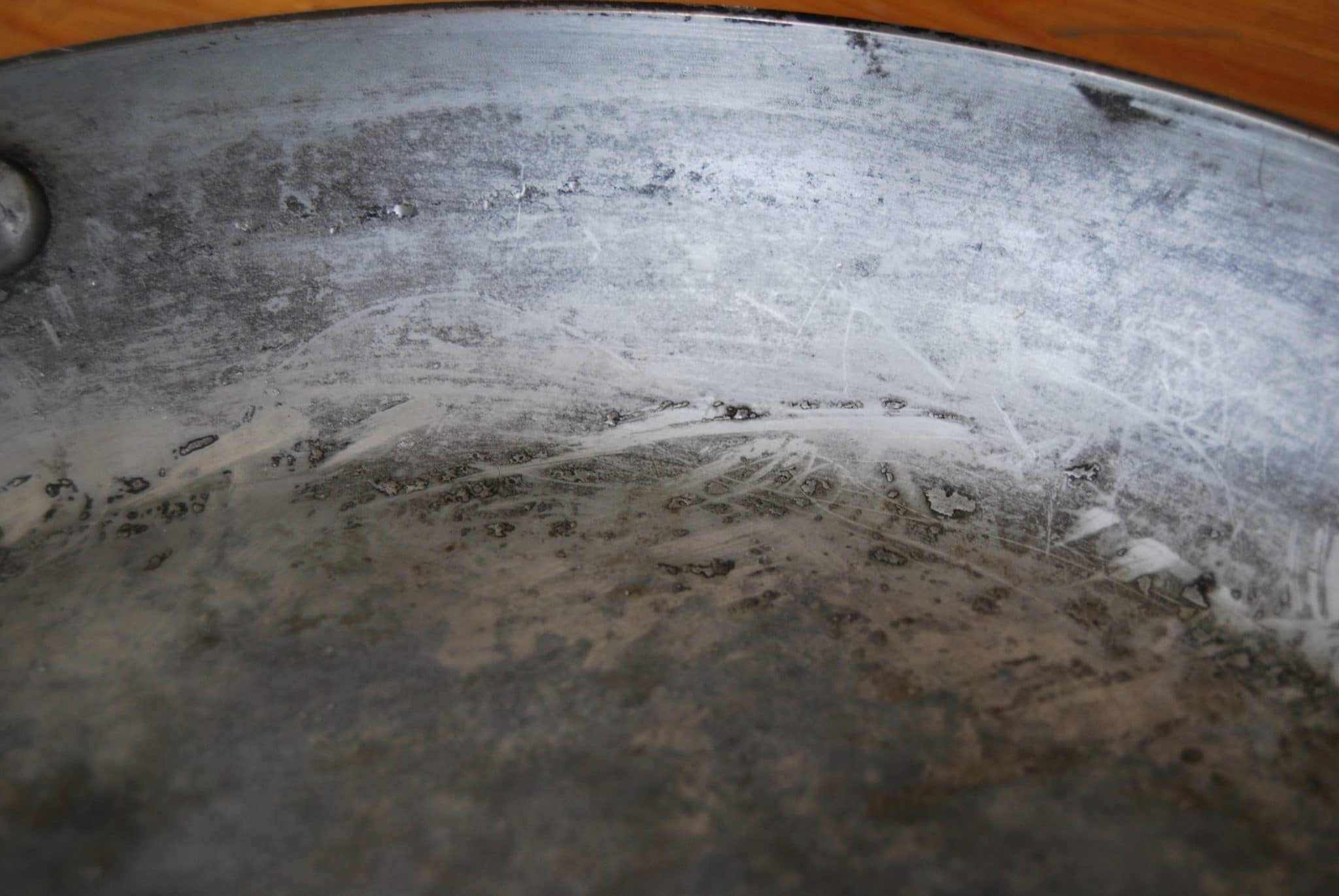
Please note that I didn’t do all this — I bought the pan in this condition. Most folks would have had this retinned but the woman from whom I bought it suggested I try it out before deciding whether or not to re-tin it, and I’m glad I did, because this pan cooks beautifully.
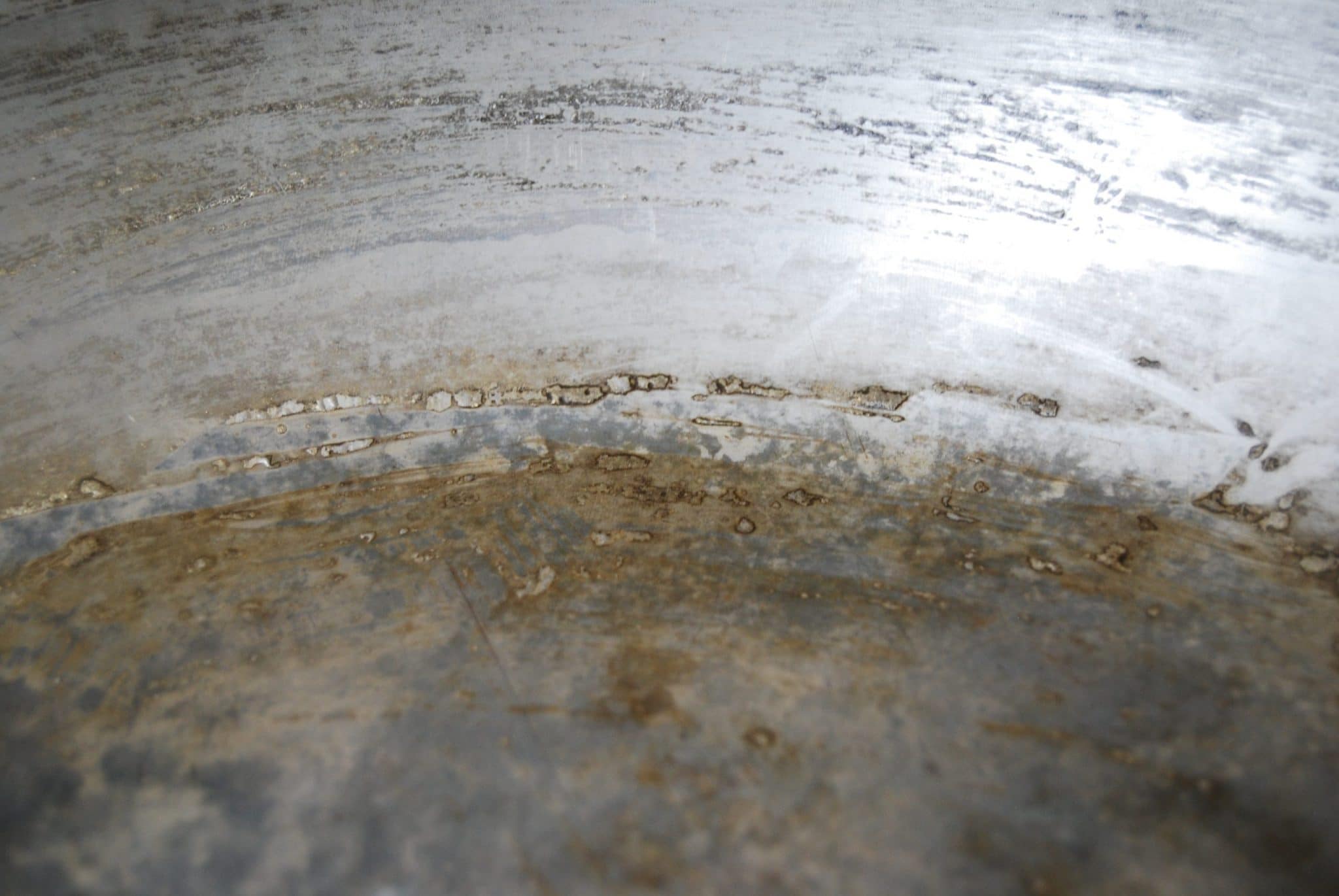
This is the least-stick copper pan I have. It cleans up wonderfully well — don’t let the brown stuff fool you. It’s like the pan has come through the smearing and bubbling with a diamond-slick finish that is ready for anything. I love it.
My advice to you
Of course you don’t want to smear your tin. As cavalier as I am about it, I don’t want to smear my pans either. Here is what I have learned about cooking in tin-lined copper and how to avoid smearing.
With an empty pan, medium heat is high heat. When I preheat a copper pan, I put the dial to the middle-most setting on my cooktop.
Keep oil or butter in your pan until you add food. A dry pan is vulnerable to overheating; even a few food items or a thin layer of oil will help dissipate heat.
If your pan gets dry while you’re cooking, add oil or butter. I suspect some of my smearing is from sautéing stuff without enough oil. Even that little bit of liquid will help moderate the pan’s surface temperature.
Learn to cook lower-and-slower. I used to think that food would cook faster if I turned the heat up, but this doesn’t work. Learn a few techniques to help your food cook more efficiently: cut it into smaller pieces; fillet or butterfly proteins; pound chicken breasts to help flatten them; cover the pan to help food steam a bit.
Water prevents smearing. If you’re boiling water or making stock, stew, or any other liquid dish, that liquid will absorb heat and keep the pan well below tin’s melting point. As long as there’s an inch or more of liquid, use whatever heat setting you need to sustain your boil or simmer or whatever.
If you smear a pan, don’t panic. Let the pan cool down and then take a close look. No copper showing through? You’re fine.
If you accidentally drastically overheat a pan, let it cool down before you touch the tin. My experience is that it takes some kind of mechanical action to smear tin, so just let it sit and you may avoid smearing it.
If you smear the pan and can’t stand it, get it retinned. Smearing doesn’t hurt the copper. Your pan will come back all nice and fresh and beautiful as if nothing ever happened to it.
I hope this helps you. If you have any questions or helpful tips of your own, please comment.
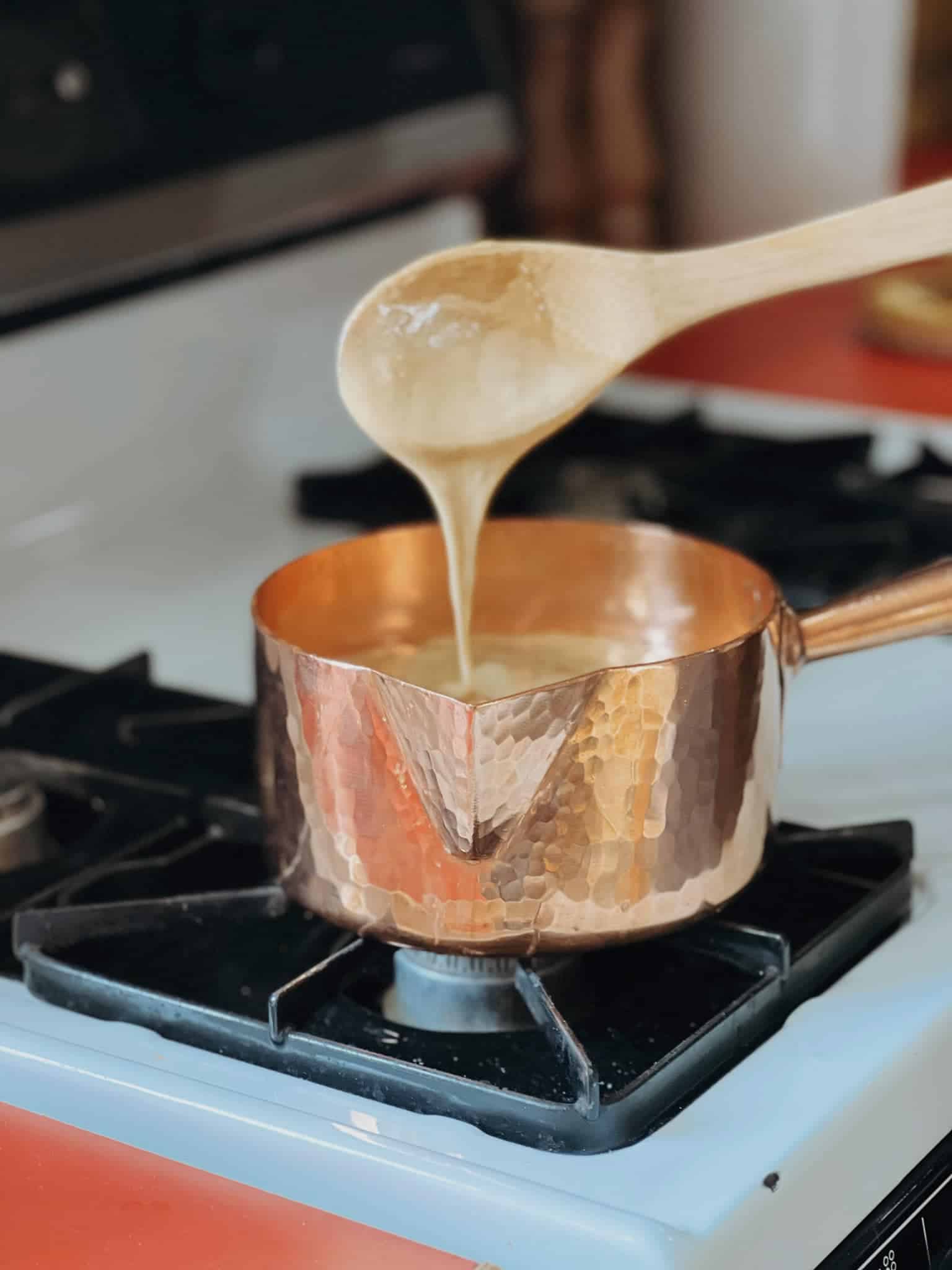

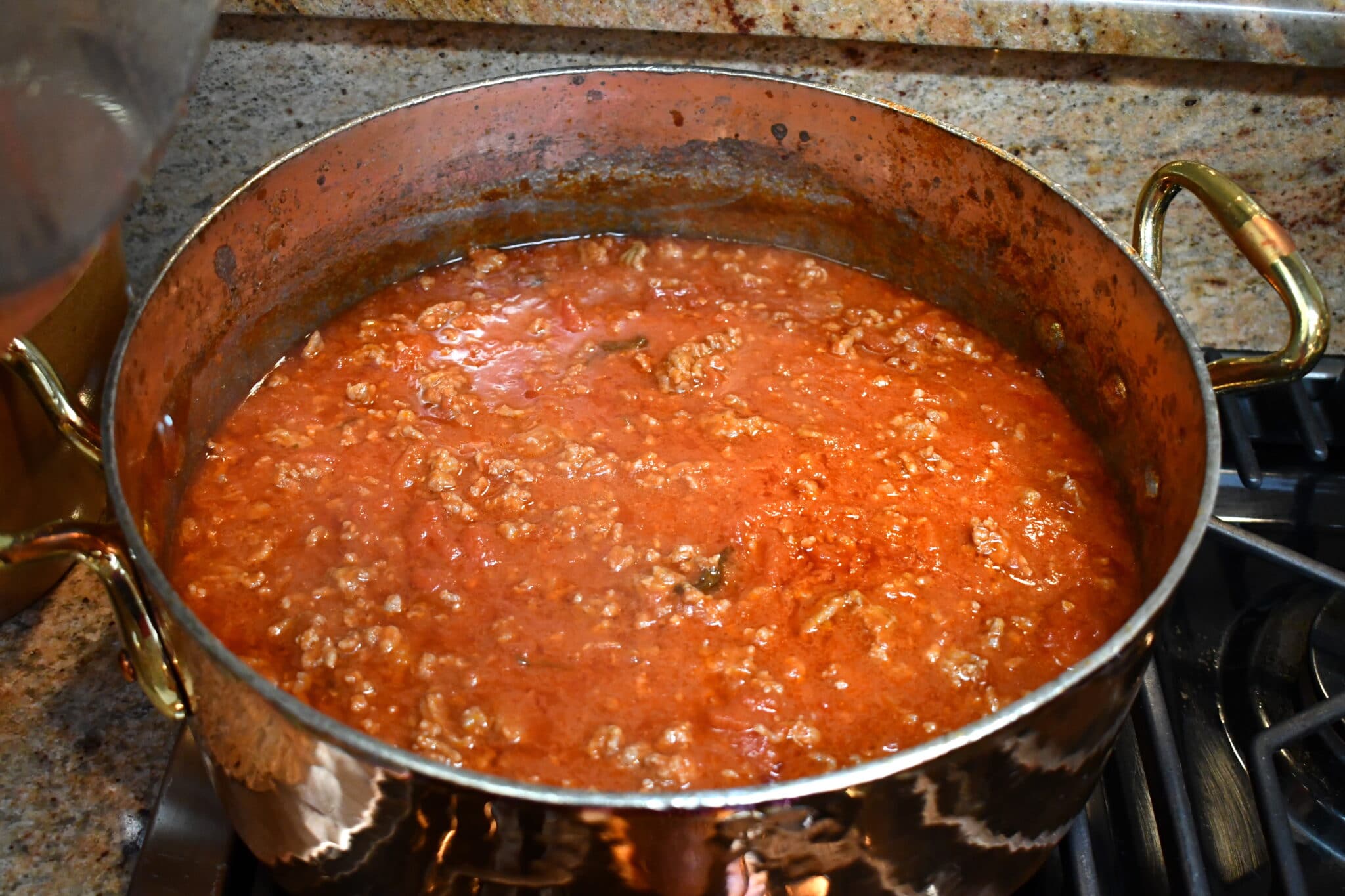
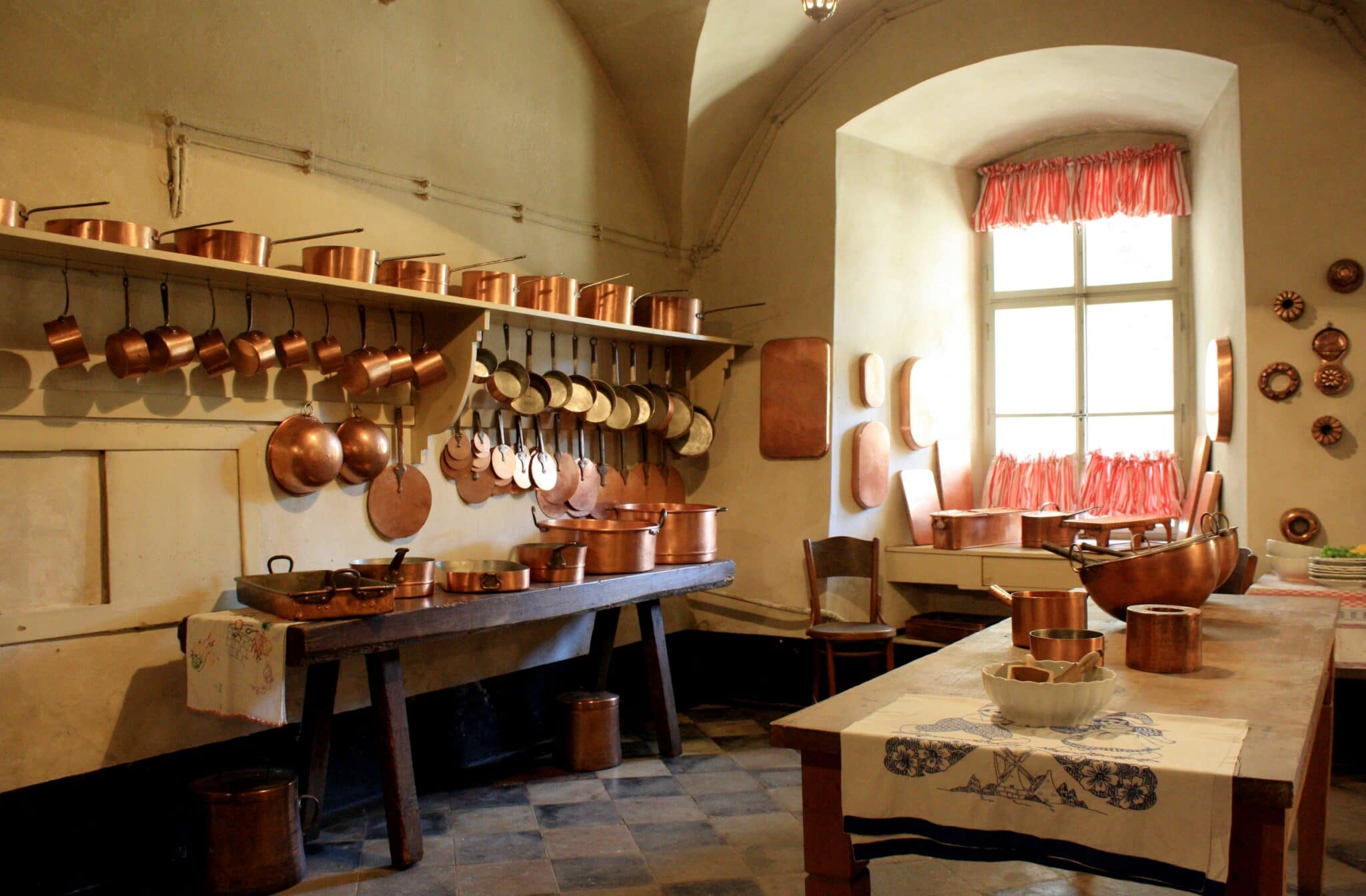

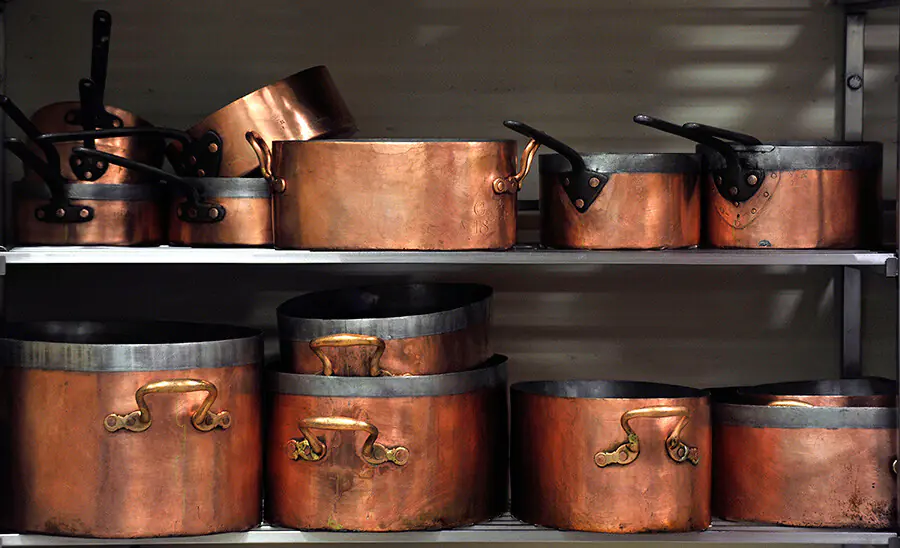
Very helpful article on smearing and bubbling, both of which I have acquired on my Mauviel tin-lined 10-inch skillet after three uses. I suspect too-high heat even though I tried never to exceed medium heat, and I will watch more carefully next time. The advice on reducing the size/thickness of the pieces of food was also helpful. Would starting the oil to heat in a cool pan make any difference to the smearing factor? To the “stickiness” of the pan?
Glad you found it helpful! You can manage heat in a pan in a few ways: one is to reduce the heat of course, but another strategy is to make sure there are objects in there that can absorb heat, like oil/butter/liquid and/or pieces of food. As for when to add the oil, the guidance is always to start it cold, but that’s for heat management, not stickiness. You may be thinking of stainless steel, for which the advice is to heat it dry and then add oil, but that’s a strategy to help reduce the stickiness of stainless. Tin is much less sticky and doesn’t need any help like that.
Thanks for the comment!
Thank you, I WAS thinking of SS—does the advice to heat “dry” and then add oil pertain to SS-lined copper skillets as well as regular SS skillets?
The “heat it dry and then add oil” is intended to help ANY stainless-steel surface to be less sticky, so it’s applicable to a stainless steel pan as well as a copper pan with a stainless steel lining. Let me know if that helps you!